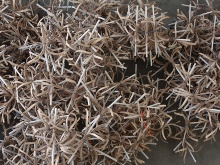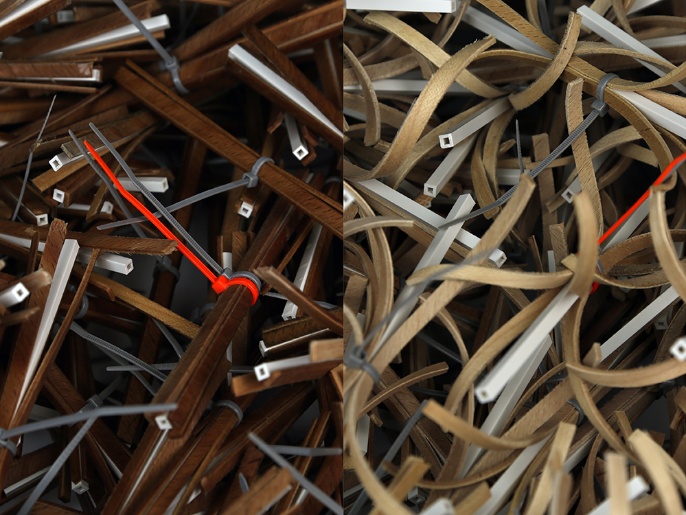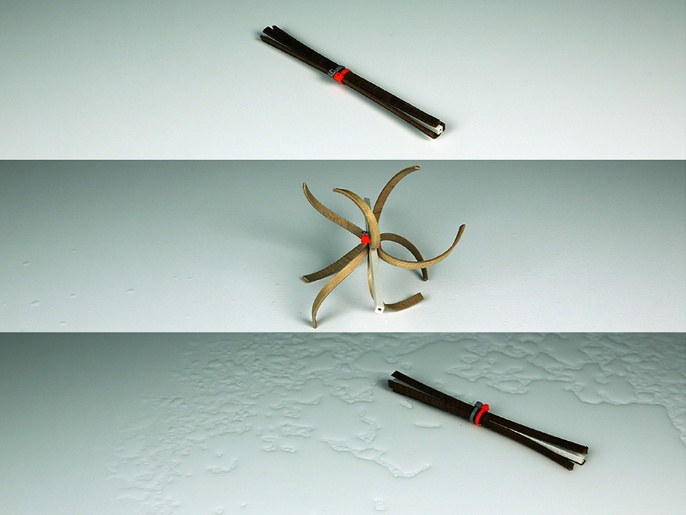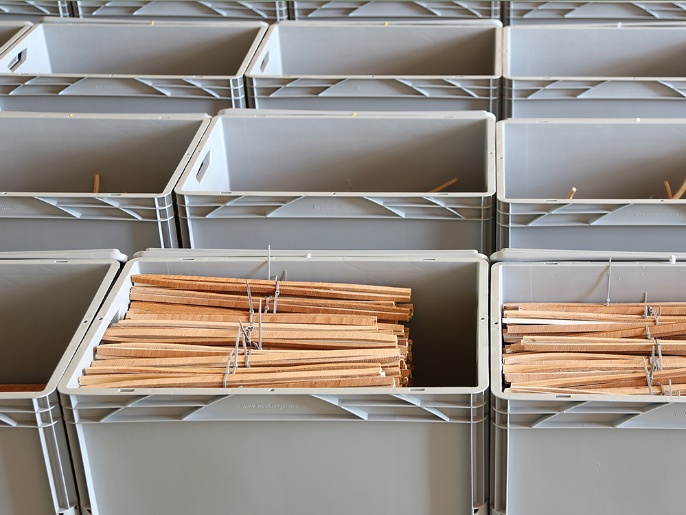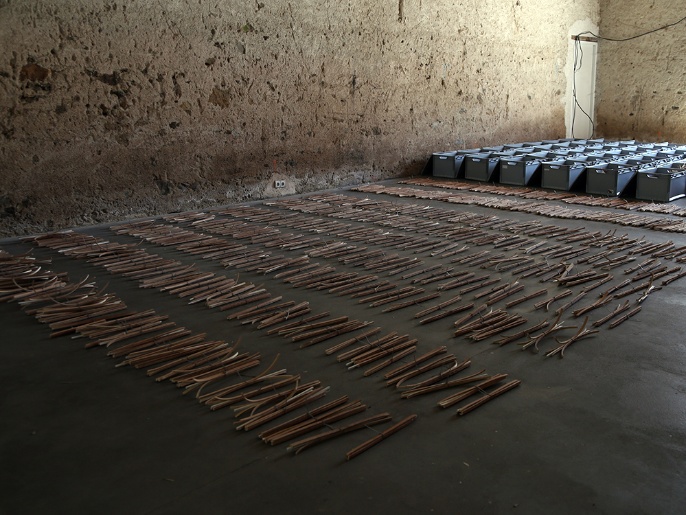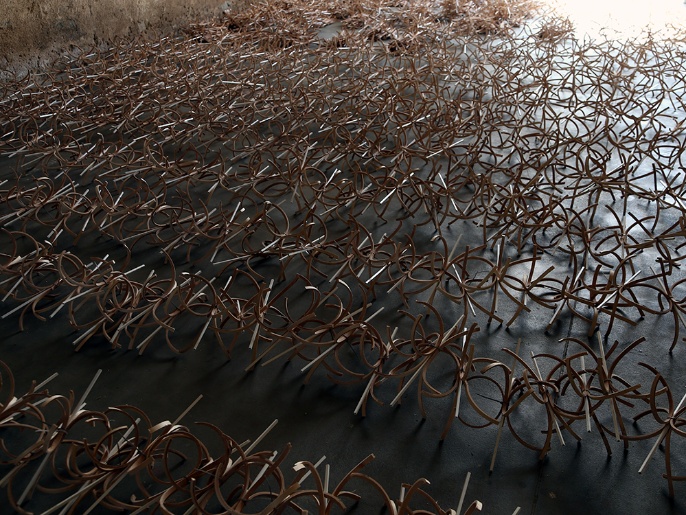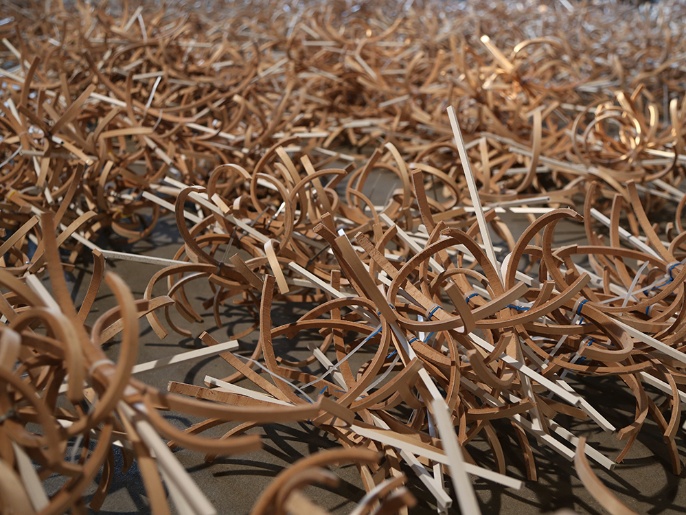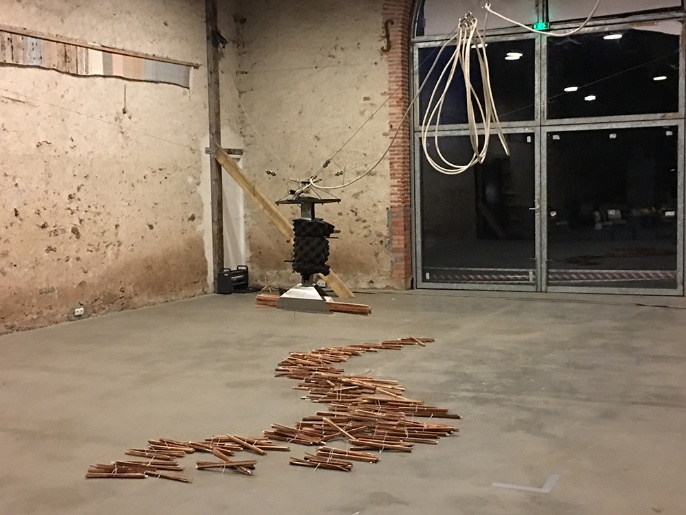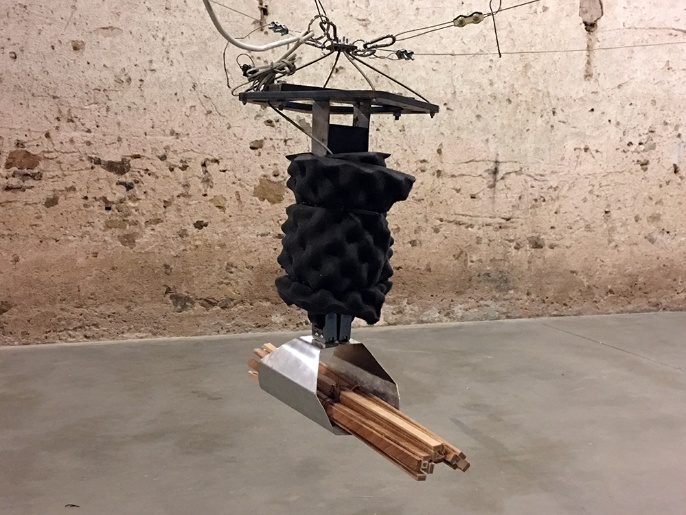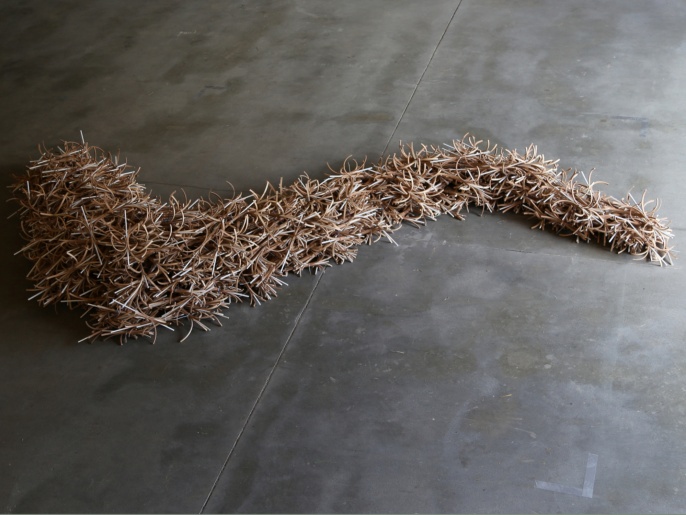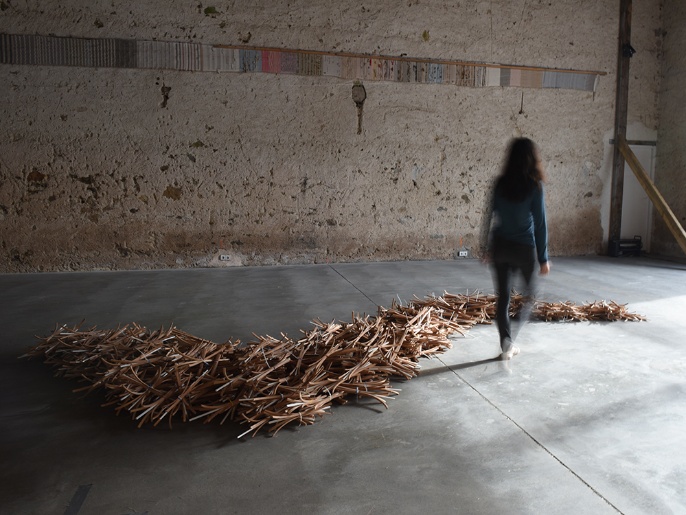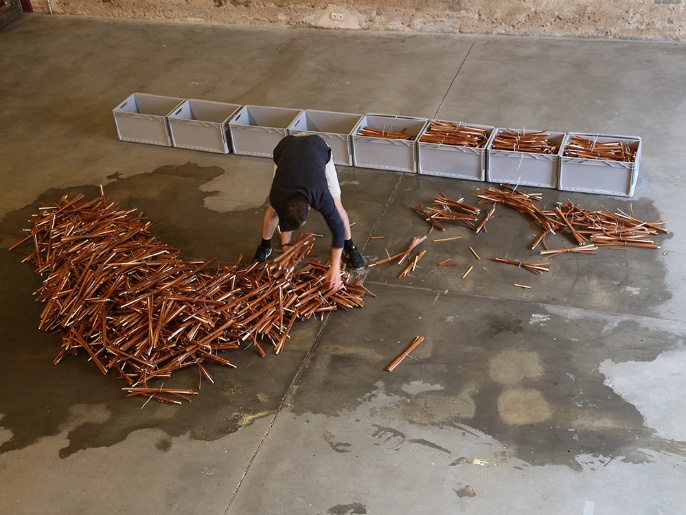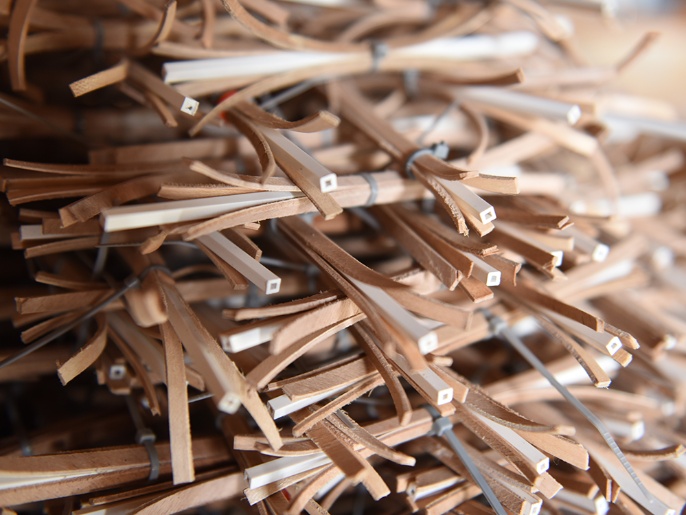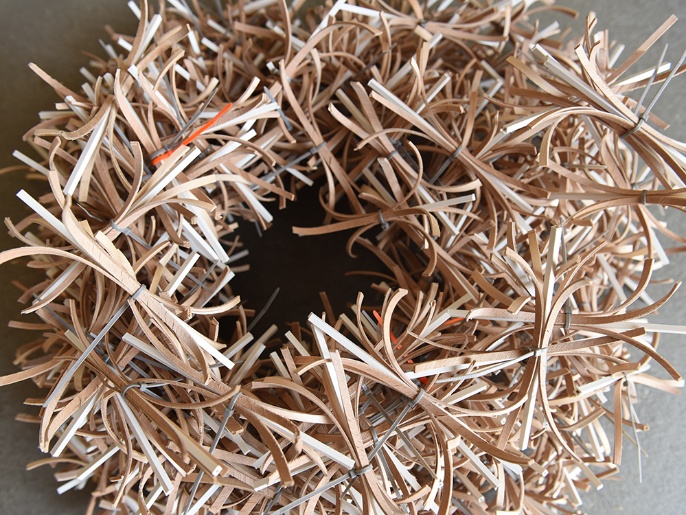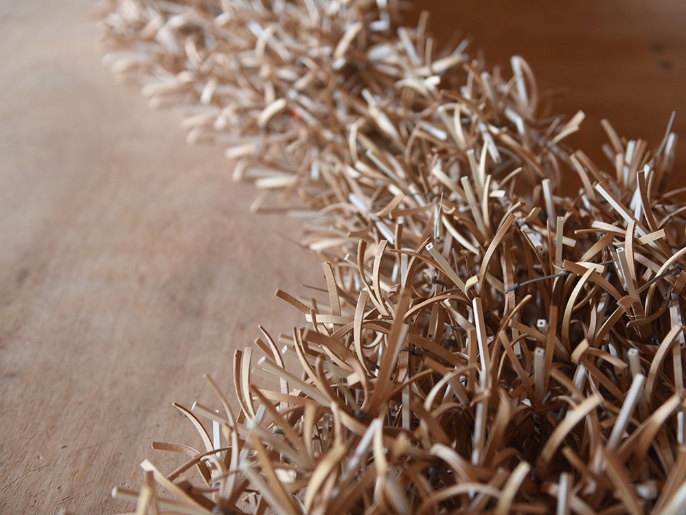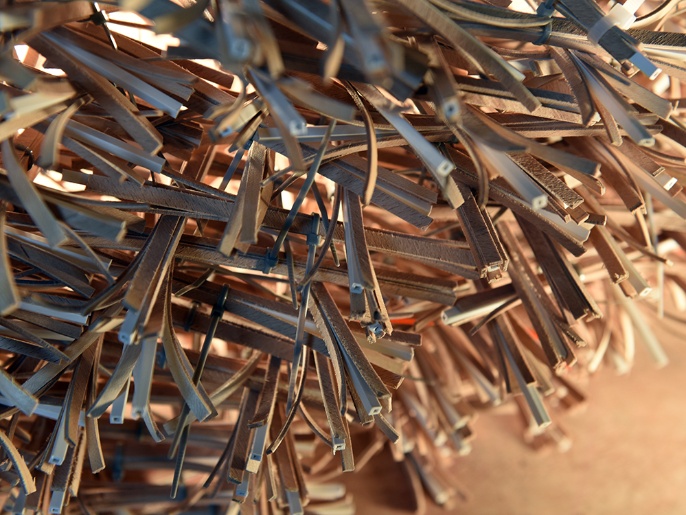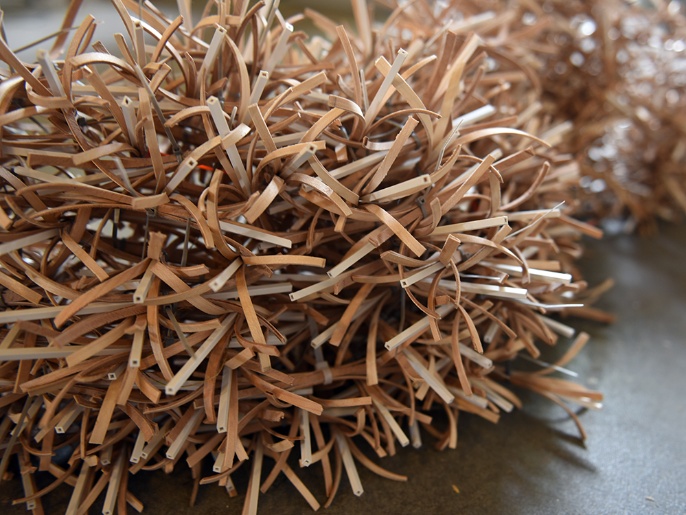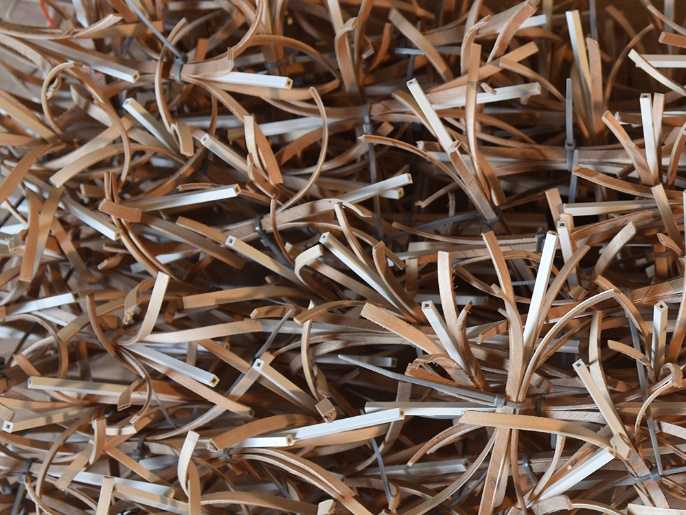The workshop 'Hygroscopic Aggregate Structure' conducted by the ICD at the Domaine de Boisbuchet in France introduced participants to the notion of designed granular materials and taught robotic construction techniques, which are gentle and non-invasive to the material system and the surrounding environment. Participants received an overview of the theoretical foundations of designer matter (DM), which is proposing a transition from machinic processes of architectural production towards a material intelligence: the material in and of itself becomes a machine.
DESIGNED GRANULAR MATERIALS
Granular materials are defined as a system consisting of a multitude of particles with only contact forces acting between them. If the individual particle is designed, the behaviour of the overall system can be calibrated to specific performative effects. Designed granular materials are a form of designer matter (DM).
HYGROSCOPIC GRANULAR MATERIALS
In hygroscopic granular materials all or parts of a particle are made from hygroscopic actuated wood. That means that the particle geometry can undergo transformations, for example moving from a convex linear to a double non-convex hook-shaped geometry. The properties of the system consequently change over time as the hygroscopic material transforms under the influence of its environment.
WORKSHOP AGENDA
Participants have worked with both matter and robots. On the matter side they designed with hygroscopic particles and locally sourced materials, which were considered and treated as a granular material. On the robot side they have been accustomed with a cable robot and aerial robots. In the first phase teams of two made design proposals that integrated at least one granular system and one robotic system. In phase two these proposals have been developed into two architectural prototypes.
ICD Institute for Computational Design and Construction
Karola Dierichs, Achim Menges
with Dylan Wood, Ondrej Kyjanek, Leyla Yunis
Participants
Amer Aldour, Sharif Anouar, Sacha Cutajar, Carlo Antonio Del Mazo Paz, Daniel Eisinger, Ryan Fernandes, Anne-Cécile Gauthier, Noemi Hirata, Arek Keshishian, Seraina Lareida, Chia Wen Lee, Anneline Létard, Yi-Wei Lin, Ludovic Mallegol, Francesco Maria Massetti, Lin Pei-Hsuan, Sima Refae, Latifa Saeed, Mattia Santi, Francesca Silvi, Eleni Maria Skevaki, I-Hsiang Wang, June Chen Xing, Christelle Zaidan
Workshop Development
Scientific Development
Karola Dierichs, Dylan Wood
with David Correa, Matthias Helmreich
Robotic System Development
Ondrej Kyjanek with Martin Loucka
Project Coordination
Karola Dierichs with Leyla Yunis
Research Assistants
Miguel Aflalo, Martin Alvarez, Christian Arias, Pedro Giachini, Jasmin Sadegh,
Alexander Wolkow
Funding
Holcim Awards for Sustainable Construction
Domaine de Boisbuchet
Bibliography
Dierichs, K., Menges A.: 2016, Towards an aggregate architecture: designed granular systems as programmable matter in architecture, Granular Matter, 18 (2). DOI: 10.1007/s10035-016-0631-3
Dierichs, K., Menges, A.: 2015, Granular morphologies – programming material behaviour with designed aggregates, Architectural Design, Vol. 85 No. 5, Wiley, London, pp. 86-91. ISBN 978-11118878378; DOI: 10.1002/ad.1959
Keller, S., Jaeger, H.M.: 2016, Aleatory architectures, Granular Matter 18(29). DOI:
10.1007/s10035-016-0629-x
Reichert, S., Menges, A., Correa, D.: 2015, Meteorosensitive architecture: Biomimetic
building skins based on materially embedded and hygroscopically enabled
responsiveness, CAD Journal, Elsevier, Volume 60, March 2015, pp. 50-69. DOI:
10.1016/j.cad.2014.02.010 (ISSN 0010-4485)
Reis, P.M., Jaeger, H.M., van Hecke, M.: 2015, Designer Matter, A perspective, Extreme
Mechanics Letters 5, 25–29. doi: 10.1016/j.eml.2015.09.004
Rüggeberg, M., Burgert, I.: 2015, Bio-inspired wooden actuators for large scale
applications. Plos One, 10(4): e0120718.
Wood, D., Correa, D., Krieg, O., Menges, A.: 2016, Material computation—4D timber
construction: Towards building-scale hygroscopic actuated, self-constructing timber
surfaces, International Journal of Architectural Computing (IJAC), Sage, February 2016.
DOI: 10.1177/1478077115625522


